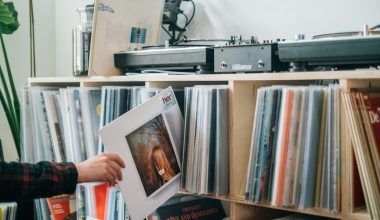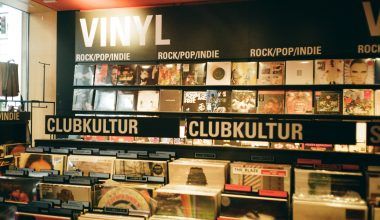Getting your music on Spotify without a record label is easier than ever. Gone are the days when only artists signed to big labels had access to global platforms. Today, anyone with a passion for music and a bit of guidance can share their songs on Spotify and reach listeners around the world. This guide will show you how to do just that while keeping the process simple and approachable.
Spotify is one of the largest music streaming platforms globally, with millions of users. Whether you’re an aspiring musician or an established indie artist, having your music on Spotify allows you to connect with listeners, gain exposure, and even earn revenue. Most importantly, sharing your song on Spotify without a label gives you creative freedom and full control over your work.
Yes, you can! Many successful independent artists started their careers by uploading their songs directly to Spotify. While labels provide resources and industry connections, they’re not a necessity for reaching your audience. You just need the right tools and strategies to distribute your music.
Step 1: Create High-Quality Music
The first and most important step is to create music that resonates with your audience. Invest time in songwriting, and if possible, work with experienced producers or sound engineers to ensure your track sounds polished and professional. Even though you don’t need a label, your music should compete with tracks released by artists who do.
Step 2: Choose a Digital Distribution Service
Spotify doesn’t allow artists to upload their songs directly. Instead, you’ll need a digital distribution service. These platforms act as the middleman between you and Spotify.
Here are some popular options:
- DistroKid: Known for its simplicity and affordability.
- Deliver My Tune: Great for detailed reports and multiple platform distribution.
- CD Baby: Offers a one-time payment model instead of subscriptions.
- Amuse: A free option for artists starting out.
Each distributor has its pros and cons, so research thoroughly before choosing one.
Step 3: Register for Copyright and Royalties
Before you share your song on Spotify without a label, ensure your work is protected. Registering your music with copyright organizations secures your ownership rights. Additionally, sign up with a performance rights organization (PRO) like ASCAP, BMI, or PRS to collect royalties when your music is streamed or played publicly.
Step 4: Prepare Your Song for Distribution
Distributors will require specific assets to upload your music. Here’s what you’ll need:
- Audio Files: Ensure your track is in a high-quality format like WAV or FLAC.
- Cover Art: Create eye-catching artwork that meets Spotify’s guidelines (3000×3000 pixels).
- Metadata: Include details like the song title, artist name, and genre.
Step 5: Upload Your Song
Once you have everything ready, upload your song to your chosen distributor. Follow their step-by-step process, and ensure all information is accurate. Some distributors even let you schedule a release date, which can be helpful for promoting your song in advance.
Step 6: Promote Your Song
Uploading your track is just the beginning. To reach listeners, you’ll need to actively promote your music. Here are some effective ways:
- Social Media: Share snippets, behind-the-scenes content, and updates on platforms like Instagram, TikTok, and Twitter.
- Spotify for Artists: Claim your profile to access analytics and pitch your songs to Spotify playlists.
- Collaborate with Playlists: Reach out to curators of popular playlists in your genre.
- Create Visual Content: A lyric video or short teaser can attract more listeners.
Step 7: Engage with Your Audience
Building a loyal fanbase is just as important as creating great music. Reply to comments, thank listeners for their support, and involve your fans in your journey. Personal connections can turn casual listeners into lifelong supporters.
Step 8: Keep Releasing Music
Consistency is key. The more frequently you release music, the better your chances of gaining traction on Spotify. Regular uploads help keep your profile active and your listeners engaged.
Benefits of Sharing Your Song Without a Label
There are many advantages to going independent:
- Creative Freedom: You retain full control over your music and branding.
- Higher Revenue Share: Without a label, you keep a larger portion of the earnings.
- Direct Fan Connection: You engage directly with your audience, building a closer relationship.
Common Challenges (And How to Overcome Them)
- Limited Budget: Independent artists often have smaller budgets. Focus on cost-effective tools and prioritize your spending on essentials.
- Promotion Difficulties: Use free or low-cost platforms like social media and collaborate with other artists to boost visibility.
- Competing with Established Artists: Stay consistent and authentic; over time, quality music will find its audience.
Real-Life Stories of Independent Artists
Many musicians have successfully shared their songs on Spotify without a label. For example, artists like Chance the Rapper and Tash Sultana built their careers independently, proving that labels aren’t the only path to success.
Sharing your song on Spotify without a label is a liberating and achievable goal. By following the steps outlined above, you can release your music, connect with listeners, and grow your career—all while retaining full control over your work. The journey may require effort and patience, but the rewards of creative independence and direct fan connection make it worthwhile.
Start today, and let the world hear your unique voice. Remember, your music deserves to be heard, and Spotify can be the perfect platform to showcase it.
For further reading, explore these related articles:
- Monetize Your Song on iTunes as an Independent Artist
- Monetize Your Song on iTunes Without a Label
- Monetize Your Song on iTunes with No Upfront Fees
For additional resources on music marketing and distribution, visit DMT RECORDS PRIVATE LIMITED.






